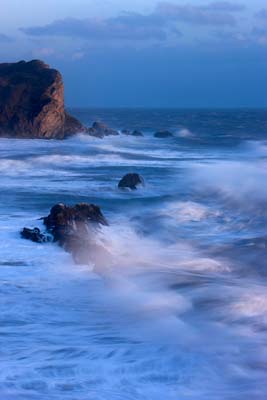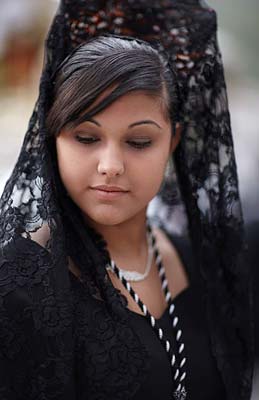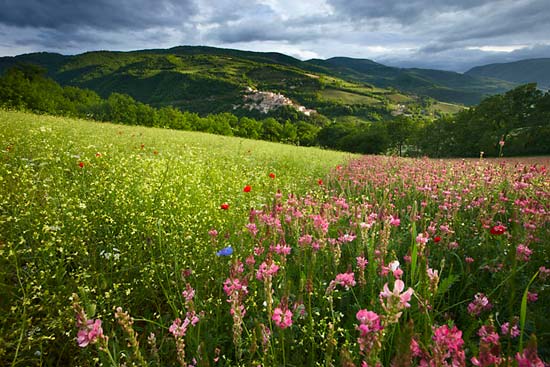
Main Image: Bastille Day firework display over Carcassonne, Aude, Languedoc-Rousillon, France. The quality of pictures have little to do with the camera used, but the tools are important. Canon 5D mkII
It's inevitable. The 1D mkIV was out earlier in the year. Photokina has been and gone, but within the next few months a 1Ds mkIV is bound to be announced. Beyond that Canon are probably hatching a plot for the 5D mkIII, whilst over at Nikon, with the D3 variants and D700 in middle age successors will be gathering in the wings. So what? I'm happy with my existing set up. Do I need a new camera? No. Do I want a new camera? No. Will I acquire the 1Ds mkIV when it eventually appears? Probably.
was out earlier in the year. Photokina has been and gone, but within the next few months a 1Ds mkIV is bound to be announced. Beyond that Canon are probably hatching a plot for the 5D mkIII, whilst over at Nikon, with the D3 variants and D700 in middle age successors will be gathering in the wings. So what? I'm happy with my existing set up. Do I need a new camera? No. Do I want a new camera? No. Will I acquire the 1Ds mkIV when it eventually appears? Probably.
I'm wearily resigned to that fact of life. Time was when cameras earned their keep over a decade. My Nikon F5s did 9 years and several hundred thousand miles of globetrotting service between 1996 and 2005. Now the life of a DSLR seems to be about 3-4 years maximum. A photographic retail trade that used to earn its bread and butter selling us consumables like film and paper now needs to sell us new hardware more often. But do we need them?
If the 1Ds mkIV is just a revamp with more pixels and HD video thrown in it's going to be a hard sell for Canon. I don't need more pixels, 21 MP is quite enough. Giving us more would be counterproductive; a greater pixel density means more noise and more memory requirements for negligible gains. The sensor resolution is already beyond the capabilities of the lenses to match, more pixels won't give us better quality. And HD video is useful for some, we're using it more and more for the Road Shows (insert link), DVDs and future web content, but with it already available on the 5D mkII and 7D it's unlikely to be the sole reason for the painful parting of hard earned cash. In these uncertain economic times persuading us beleaguered tax payers to fork out £5K+ for a few more pixels and video will be tough. People are nervous about their jobs and in the world of professional photography just surviving is an achievement. Never has the commercial and perceived value of a photograph been so low. No, if I was the person pulling the strings at Canon or Nikon I wouldn't be rushing into this; I'd wait and strive to produce a camera that gives pros and enthusiasts what they really need. I'd aim to produce the Perfect Camera at an affordable price.
it's unlikely to be the sole reason for the painful parting of hard earned cash. In these uncertain economic times persuading us beleaguered tax payers to fork out £5K+ for a few more pixels and video will be tough. People are nervous about their jobs and in the world of professional photography just surviving is an achievement. Never has the commercial and perceived value of a photograph been so low. No, if I was the person pulling the strings at Canon or Nikon I wouldn't be rushing into this; I'd wait and strive to produce a camera that gives pros and enthusiasts what they really need. I'd aim to produce the Perfect Camera at an affordable price.
Let's look at where we're at. If you're wondering why I'm only mentioning Canon and Nikon there is a reason; I have no idea at all how the other manufacturers pay the bills. We had a guest on one of our workshops (insert link) with a Sony, once. I vaguely remember someone with an Olympus. Apart from that it's been a 100% attendance record for the Big Two. And the camera that shows up on our guests tripods more than any other, maybe 60% of the time, is the Canon 5D mkII. In many ways Canon got it right with that one. I have one, it's a great camera. OK, I prefer the 1Ds mkIII because of details like the eyepiece curtain, auto bracketing options and the weather seals, but with a £3K price difference it's easy to see why the 5D is so popular. The quality of the 21 MP full frame sensor is every bit as good as its pro spec stable mate. But with both my current cameras there are things that drive me mad, convincing me that the people who design cameras have never actually used them on a cold, dark windy hill top. Camera designers give us functions because they can, not because we need them. Has anyone ever used the print facility on a 5D ? They don't understand us, and have no notion of what we need our cameras to do in the middle of a poppy field or with the waves lapping around our tripod legs on a winters evening. So let's tell them.
? They don't understand us, and have no notion of what we need our cameras to do in the middle of a poppy field or with the waves lapping around our tripod legs on a winters evening. So let's tell them.
But first we'll consider the positives. We've never had it so good. The quality and flexibility available from our state of the art DSLRs now is phenomenal. Prints over a meter wide from a sensor the size of a 35mm piece of film have the crispness and tonal qualities previously only associated with large cumbersome formats. I've just digested my Despatch from January 2004 (insert link) on this website and it reads like ancient history; those early DSLRs were pretty useless. Things have come on so far, and I'm not talking just about pixels. The technological developments that make the most impact on us out in the field are not usually the sexy ones. Take batteries for example; early digital cameras would run out of steam half way through one chilly autumnal dawn session, despite a night spent cuddling up to the charger. I now can expose for weeks with just two batteries. Camera monitors are so much better. Sensor cleaning isn't such a recurring headache. Noise is mostly invisible, even at high ISOs, and full frame sensors are now commonplace. Crucially lens performance is catching up with sensor resolution. In short cameras like the Canon 5DmkII and Nikon D700 are flexible, affordable tools that can deliver incredible results in the right hands. But they could be better. How?
 Stormy seas at Man O War Bay, Jurassic Coast, Dorset, England. Camera manufacturers don't seem to understand our need to slow exposures down. Canon 1Ds mkIII, 70-200mm
Stormy seas at Man O War Bay, Jurassic Coast, Dorset, England. Camera manufacturers don't seem to understand our need to slow exposures down. Canon 1Ds mkIII, 70-200mmLet's start with sensor sensitivity. Now I know a sensor is designed to work at an optimum sensitivity; typically ISO 100. I cannot believe the brains who enable them to work at ISO 12800 can't apply some of that ingenuity in the opposite direction. Very few of us save a few MI5 surveillance specialists or dodgy voyeurs need these sky high ISOs. What we do need fairly often is the option of slowing things down to record movement. The lowest ISO available is 50, not slow enough by far so we have to resort to putting expensive opaque bits of glass in front of our lenses to achieve exposures of several minutes. 10x ND filters have become like gold dust. Surely the boffins can manage a low sensitivity below ISO 5? Ideally we would determine the long shutter speed we desire to optimise movement and sensor sensitivity retardation could be applied to suit. And on the Perfect Camera we could apply that retardation selectively to sectors of the image area like the sky to make neutral density graduated filters redundant. Think of it; using our finger, stylus or cursor we could select the sky on the camera back, apply the degree of graduation and density required and away we go. Now that really would be useful. Dream on? We'll see.
 The Piano Grande in winter, Monti Sibillini National Park, Umbria, Italy. With a sensor that we were able to vary the sensitivity of over selective areas of the frame neutral density graduated filters would be redundant. Canon 1Ds mkIII, 16-35mm
The Piano Grande in winter, Monti Sibillini National Park, Umbria, Italy. With a sensor that we were able to vary the sensitivity of over selective areas of the frame neutral density graduated filters would be redundant. Canon 1Ds mkIII, 16-35mmSticking with sensor performance cameras with a built in High Dynamic Range facility are now available; Apple's iPhone for one. As it stands this will be of interest only to those who like the gruesome “Harry Potter” look of multiple exposures merged using HDR software. But any development which lets us hang on to more highlight and shadow detail is going to be useful. Please could we have the option to make multiple auto bracketed simultaneous exposures? I hate HDR pictures but I sometimes use subtle manual exposure merging. This way we could make perfect merges from hand held exposures of moving subjects. It's going to test the cameras processor and buffer but that's not my problem.
 Poppy field at dawn, Corton Denham, Somerset, England. Two exposures merged manually in Photoshop. Canon 1Ds mkII, 16-35mm lens @17mm
Poppy field at dawn, Corton Denham, Somerset, England. Two exposures merged manually in Photoshop. Canon 1Ds mkII, 16-35mm lens @17mmMy cameras have loads of auto focusing points which can be individually selected, but they're all clustered around the centre of the image area.
In practice it's just not useful.
In the heat of the decisive moment selecting an AF point is a fiddle that is just not quick enough, and when all is said and done the focus points need to be out on the intersections of thirds to be of use.
Sports photographers may shoot with the action in the centre then crop to improve composition.
But I'll be damned if I've invested in 21 MP full frame quality only to subsequently throw dollops of it away.
What we really need is the ability to select an AF point anywhere in the frame, or at least to the margins of the thirds, with just a touch to the screen on the camera back.
Obvious, isn't it?
 A penitent in the Semana Santa procession through Malaga, Andalucia, Spain. Generally the last place you want the point of focus is in the centre of the frame. Canon 1Ds mkIII, 85mm
A penitent in the Semana Santa procession through Malaga, Andalucia, Spain. Generally the last place you want the point of focus is in the centre of the frame. Canon 1Ds mkIII, 85mmFor landscape photography auto focus is largely redundant. Usually we need to select our composition, determine what angle of view and focal length works best then determine our aperture and focusing point to give us the depth of field required. Normally we'll be focusing at the hyperfocal distance so everything from half that distance to infinite will be sharp. In a Somerset field with a 28mm lens the nearest poppies in the frame are about 2 meters from the lens. At an aperture of f11 focused at the hyperfocal distance of 4 metres for that focal length/aperture combination I can shoot away knowing that the nearest blobs of scarlet and the distant hills will be sharp. It used to be with the old fixed focal length lenses these calculations were much simpler, the depth of field scales were etched on the lens barrel. Now i have to consult a little laminated card downloaded from the internet which lives in my Lowepro. It is low tech and indispensable, but really, couldn't all these calculations and focus commands be done in-camera? What we need is a camera that reacts to our input of the nearest and furthest points we need sharp, reads the focal length in use then sets the necessary aperture and focuses at the appropriate hyperfocal distance. Wouldn't that be useful. I don't want a camera trying to do everything for me, I want to be in control, but surely the data on little laminated card could be incorporated into the camera's brain?
 Spring flowers growing in a field in the Valnerina with Preci beyond,Monti Sibillini National Park, Umbria, Italy. How about hyperfocal distance calculations performed in camera? Canon 1Ds mkIII, 16-35mm lens @ 16mm, 0.6 sec @ f16, 0.6 ND grad filter
Spring flowers growing in a field in the Valnerina with Preci beyond,Monti Sibillini National Park, Umbria, Italy. How about hyperfocal distance calculations performed in camera? Canon 1Ds mkIII, 16-35mm lens @ 16mm, 0.6 sec @ f16, 0.6 ND grad filterAs with our images simplicity is the key. The old style dial for exposure modes on the top left of the 5D mkII is far more practical then the tedium of scrolling through menus. The important stuff like mirror lock needs to be immediately accessible, not buried in the menus. And generally speaking the bods who design our cameras need to know that we do use them in the cold, in high winds, in the dark and with gloves on.
Maybe the next generation of cameras will be unleashed on us next year with some or all of these ideas built in. If so I'll be jostling for position in the queue.
Biography
Born in England in 1957, David spent much of his youth travelling with his family between the UK, California and Canada. After leaving school David joined the Navy in search of further travels and adventures – and it was while sailing the seven seas that his interest in photography grew. After several years at sea he decided to pursue his passion for photography and returned to study in Gloucester, England. After leaving college in 1985 he began work as a freelance photographer specialising in landscape and other travel subjects, which over the last 25 years, have taken him to almost every corner of the globe.
David is now established and recognised as one of the UK's leading landscape and travel photographers. His images sell all over the world – both as fine art photography and commercially in advertising and publishing. He has won international awards for: British Gas/ BBC Wildlife Photographer of the Year Awards in 1985,1989 & 1990 and also writes regularly about landscape and travel photography for a number of national and international magazines. David has worked for numerous clients including British Airways, Sainsbury's, Geo, Toyota, Qantas, Sunday Times and the Telegraph. During the last twenty years he has also worked extensively for the National Trust covering much of the UK's landscape and coastline, which has featured in many high profile publications and several highly acclaimed photographic exhibitions. Most notably:
'New Vision' Contemporary Art Photography – AOP Gallery
'The Coast Exposed' – Maritime Museum Greenwich and the Lowry
'Climate Change – in Britain's Back Yard!' – London, Nottingham, Wales, Belfast, Bristol
'The Coast Exposed' – Maritime Museum Greenwich and the Lowry
'Climate Change – in Britain's Back Yard!' – London, Nottingham, Wales, Belfast, Bristol
“l'm still passionate about photography. All aspects fascinate me; from capturing the first light of day on a frosty landscape or making the most of a bustling market in Vietnam to portraying the dignity of a wrinkled face in China.”
David spends much of the year travelling with his wife Wendy. When not travelling they live in England, near Sherborne in Dorset.
All images in this article © David Noton
No comments:
Post a Comment